Koh Ker is an Angkorian site located approximately 2.5 hours from Siem Reap.
We stopped at Phumi Moreal, the nearest village to Koh Ker, on our way to Siem Reap by bus from Stung Treng.
- About the Ruins of Ko Ker
- We visited the Koh Ker Archaeological Site!
- Highlights of a visit to Koh Ker
- Prasat Aop Neang
- Prasat Khnar
- Prasat Khtum
- Prasat Damrei
- Prasat Chrap
- Prasat Chamreh
- Prasat Banteay Pir Chaon
- Prasat Kroes Linga
- Prasat Beng
- Prasat Krachap
- Prasat Sralau
- Prasat Linga Four
- Prasat Linga Two
- Prasat Linga One
- Prasat Srot
- Entrance pavilion of Koh Keh Temple
- Prasat Krahom
- Moat
- Prasat Thom
- Prang: 7-storey pyramid
- Tomb of the White Elephant
- Prasat Chen
- Prasat Bak
- Prasat Neang Khmau
- Prasat Pram
- Access to the Koh Ker Archaeological Site
About the Ruins of Ko Ker
Koh Ker was once the capital of Angkor during the Angkor period and was then known as Chok Gargya. The ruins are located in the jungle about 120 km from Siem Reap (Angkor Wat).
The ancient city centre developed to the north-east of the cistern, and records show that at least 10 000 inhabitants lived there at its peak. Laterite, sandstone and bricks mined in the area were used as building materials in this temple complex and archaeological site.
More than 180 sanctuaries have been found in the 81 sq km protected area, most of which are scattered throughout the forest. About 20 of these monuments are open to tourists.
During the reigns of Jayavarman IV and Harshavarman II, Koh Keh had a temporary capital (928-944 AD). Jayavarman IV implemented an ambitious building programme, and a huge water tank and some 40 temples were constructed.
The most important of these temple complexes are Prasat Thom and the seven-tiered, 36 m high pyramid called Phraan. The pyramids are unique among Angkorian monuments and make the complex special. They are arranged in straight lines, rather than concentrically as in the Khmer royal temples, and were probably used as state temples.
During the reign of Jayavarman IV, the sculptural art of the Koh Khel style reached its zenith and a wide variety of statues were carved. Unfortunately, many of the sculptures were stolen and cannot be viewed here. Some of them are in museums and private collections. Some statues were kept by government agencies and some are now housed in the National Museum in Phnom Penh.
We visited the Koh Ker Archaeological Site!
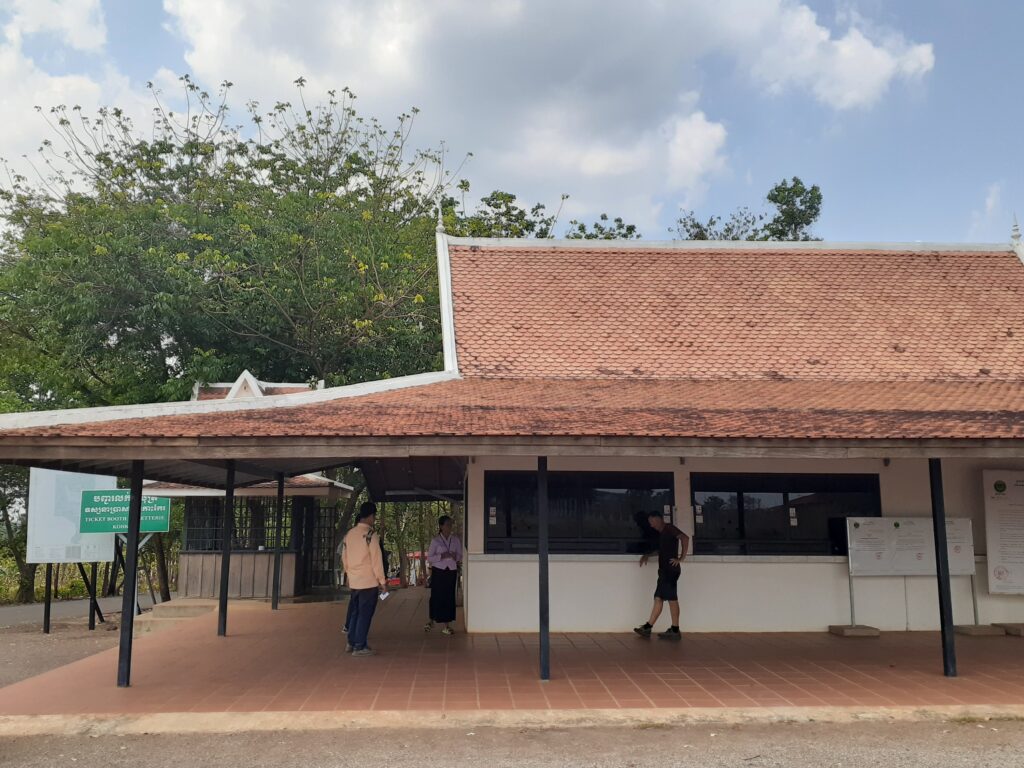
We left Stung Treng in the morning at 9ish and arrived at Phumi Moreal, the nearest town to the Koh Ker ruins, shortly after noon. This town is marked on the map as ‘Phumi Moreal’, but it is also known as ‘Sayong’.
After checking in at a guesthouse, we hired a motorcycle there and headed to visit the Koh Ker ruins.
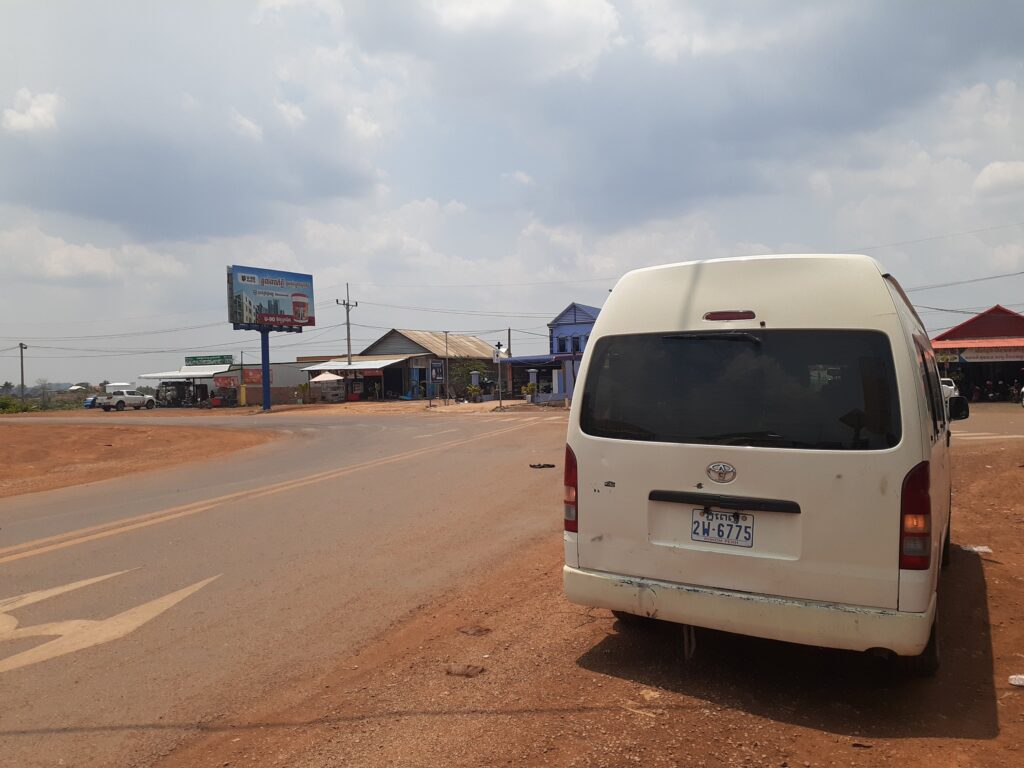
We got off the bus from Stung Treng at the intersection with the road accessing the Koh Ker Ruins. After getting a motorcycle, we turned north at that intersection and headed towards the Ruins.
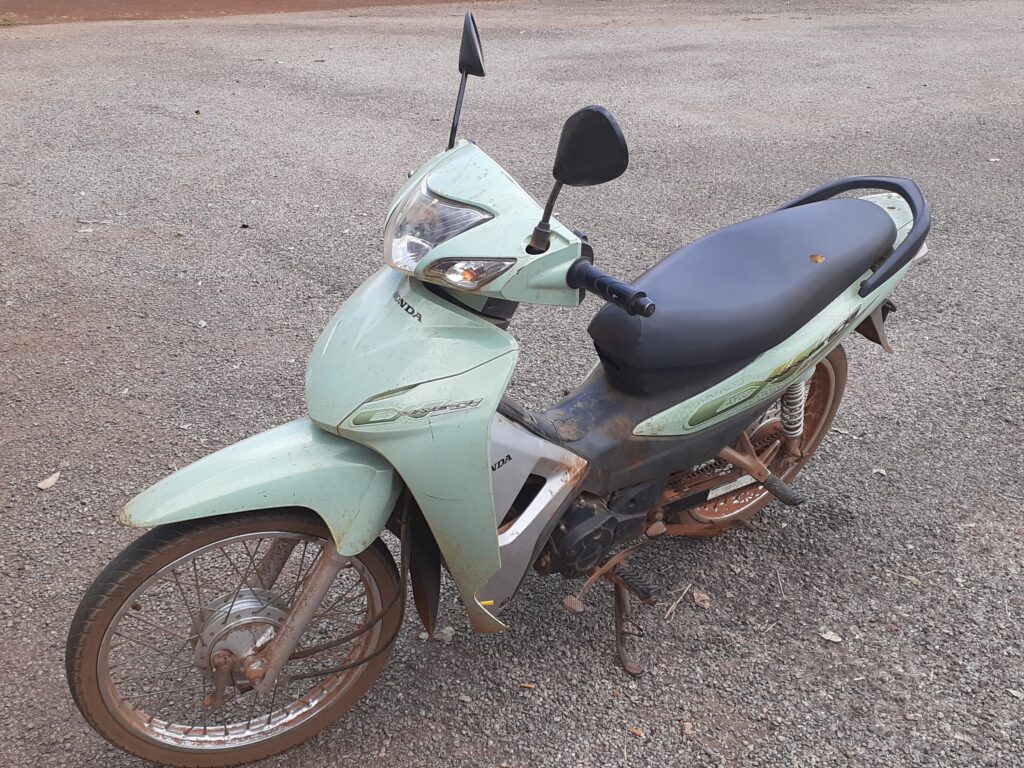
The motorcycle was an old manual HONDA motorbike. The distance from the town to the Koh Ker ruins is more than 10 km, so if you are staying in this town, you will need to ensure that you have transport. Many travellers seem to take taxi day trips from Siem Reap.
Turn north at the intersection and go a short distance to the ticket office. Tickets cost USD 15 per person. The ticket is punched to gain entry and there will be several ticket checks afterwards, so do not lose your ticket!:)
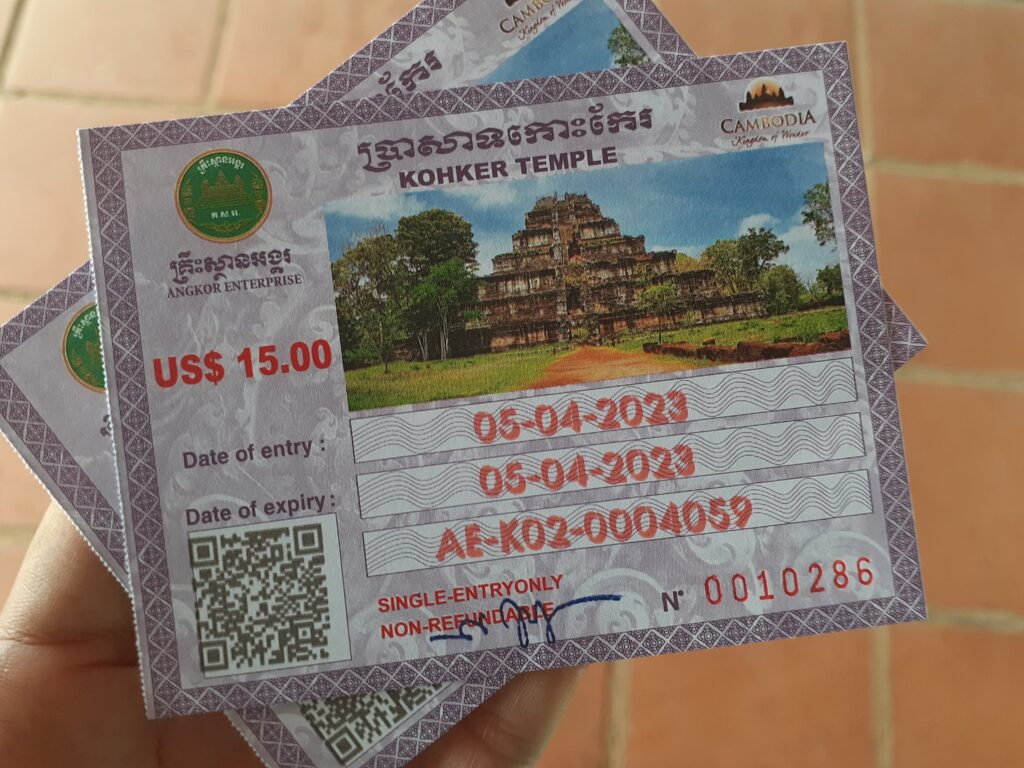
After purchasing the entrance ticket and riding the motorbike again for a while, there is an immediate ticket check. Go straight past it and you will see several ruins on either side. At the end of the road, there is a junction and visitors to the ruins should turn right, as signs tell them to do so. From here, the tour takes an anti-clockwise route round the cistern.
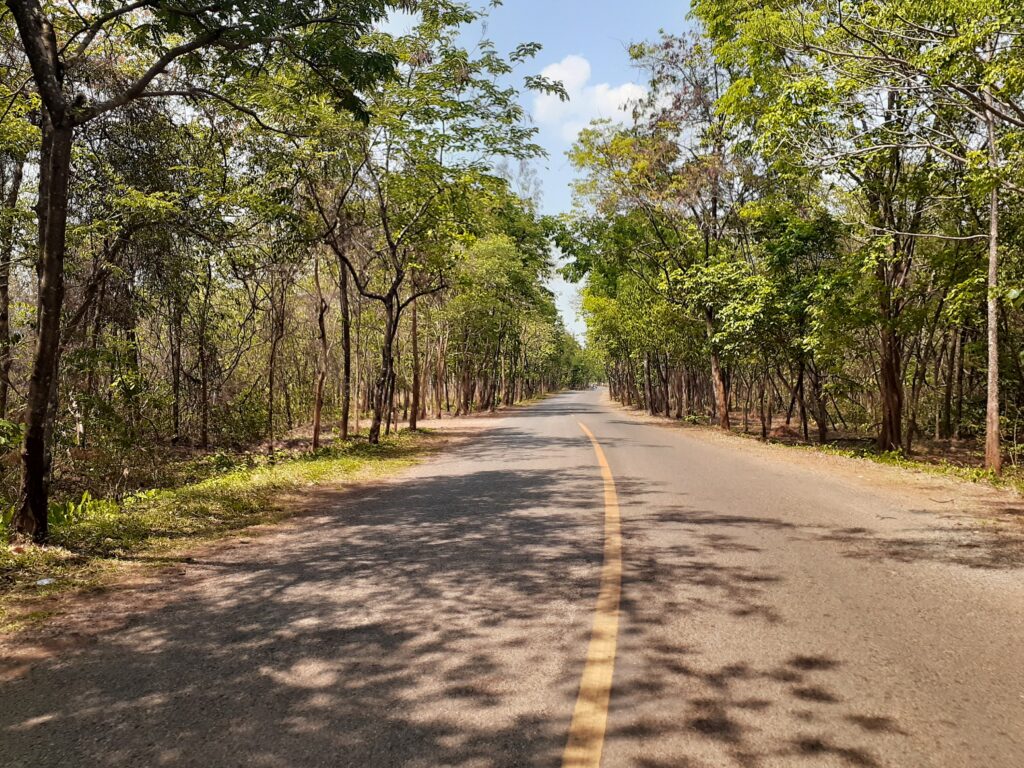
Highlights of a visit to Koh Ker
The ruins of Koh Ker are a complex of temples and Angkorian monuments. There are many sights to see, but the main ones are the temples and pyramids around the car park.
The eastern side of the Royal Reservoir, now mostly dry and overgrown with grass, is dotted with temple towers, and to the south there are still some spectacular temple ruins.
Here are the highlights in the order in which we visited them.
Prasat Aop Neang
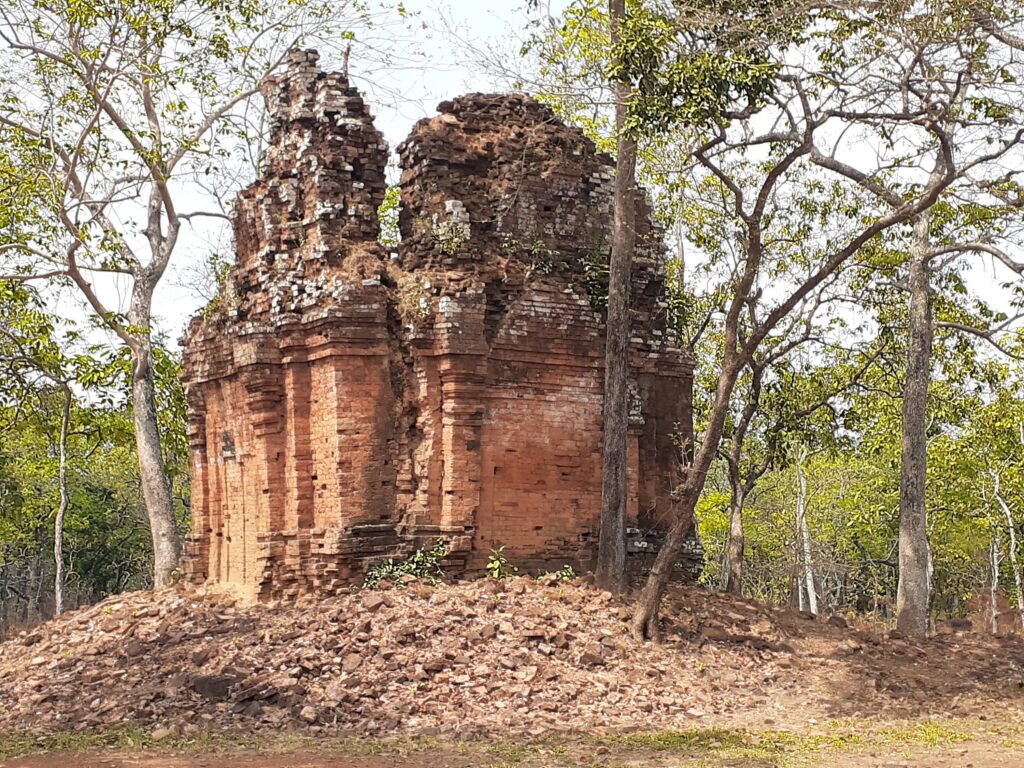
The temple ruins are the first to appear after turning the fork. The brick tower remains.
Prasat Khnar
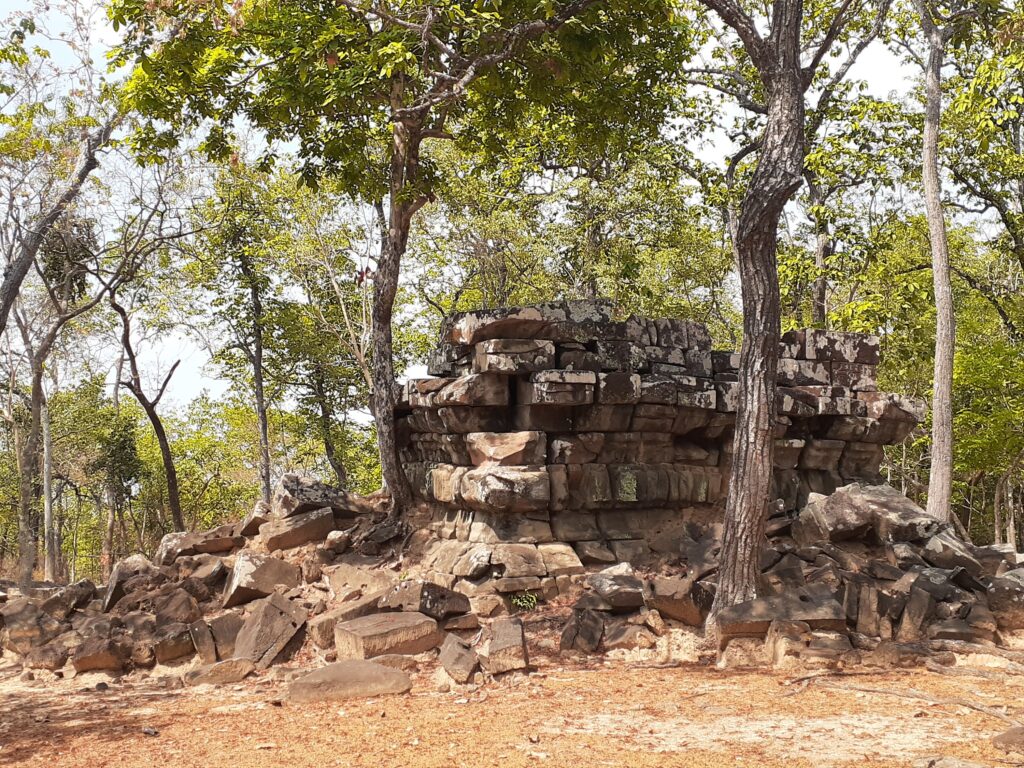
Prasat Khnar once housed a huge linga, 7 m high and 4 m in diameter. It is known that the linga was placed on a huge plinth (3 m high and 7 m square) constructed from several blocks of sandstone, but the tower has now collapsed.
Prasat Khtum
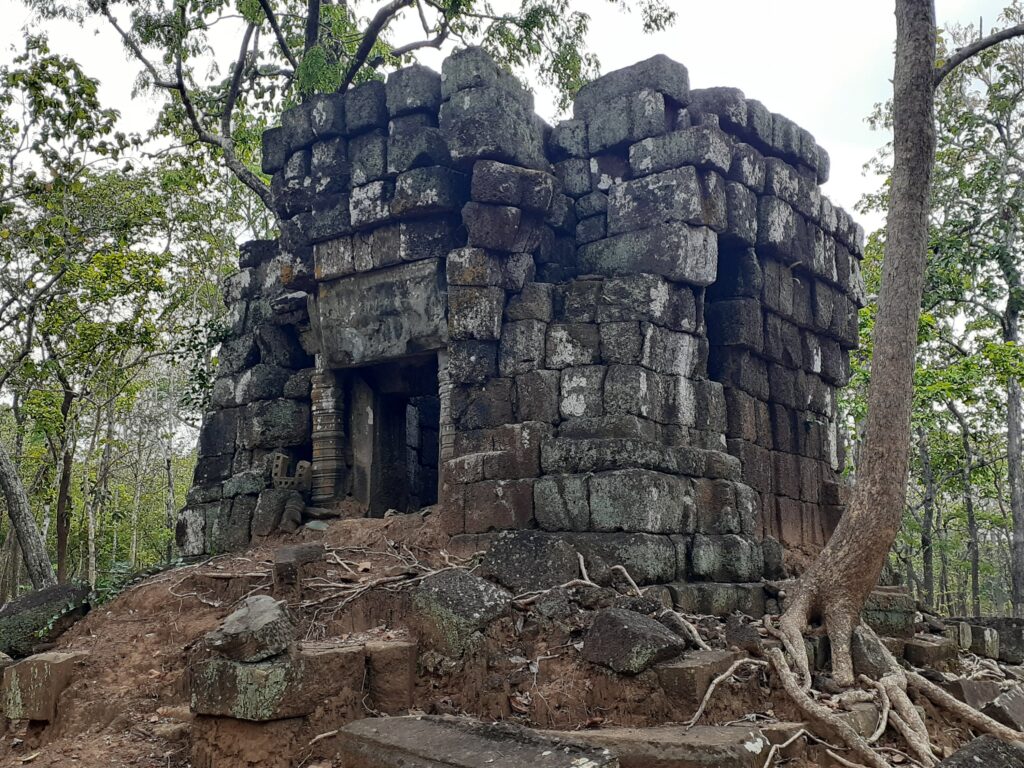
Situated on a sloping terrain between the south-east and east-west axes, the single temple sanctuary Prasat Khtum is a square temple built on an east-facing laterite base. It contains an interesting eastern doorframe.
Prasat Damrei
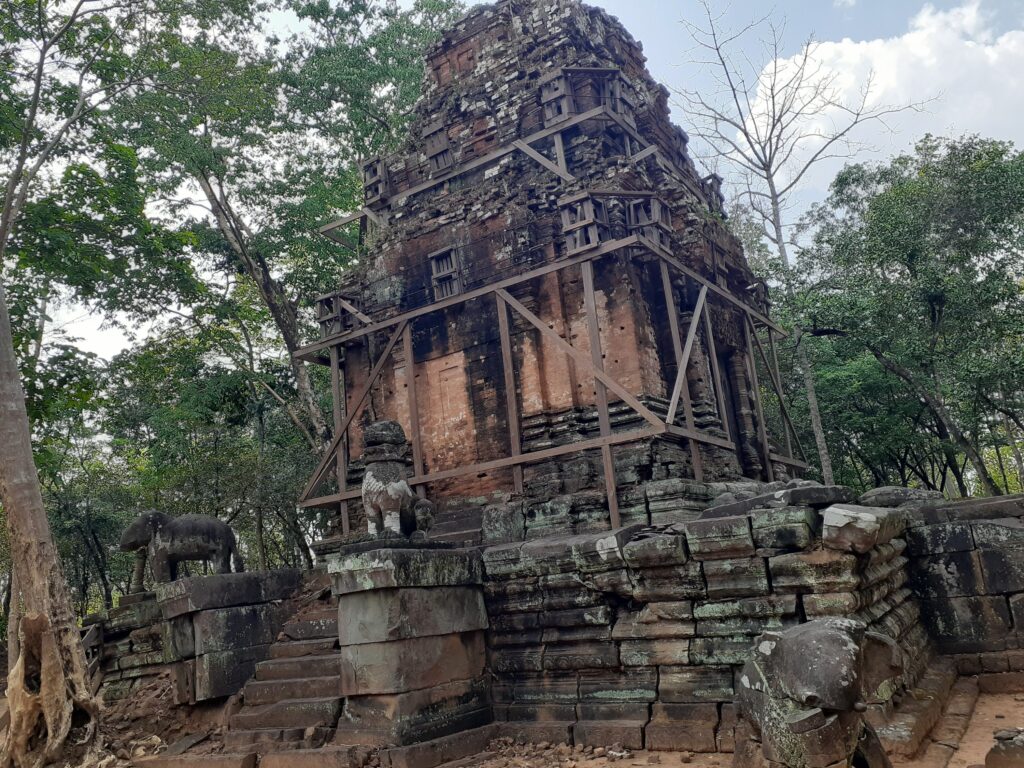
Prasat Damrei is located behind Prasat Kutum. ‘Damrei’ means ‘elephant’. Enclosed, the temple stands on a high platform.
On each of its four sides are about 10 steps, and stone statues of eight lions once adorned each side of the steps, but now only one remains in its original place. The four corners of the platform were once adorned with beautiful elephant sculptures, but now only three remain. One of these was placed under the plinth.
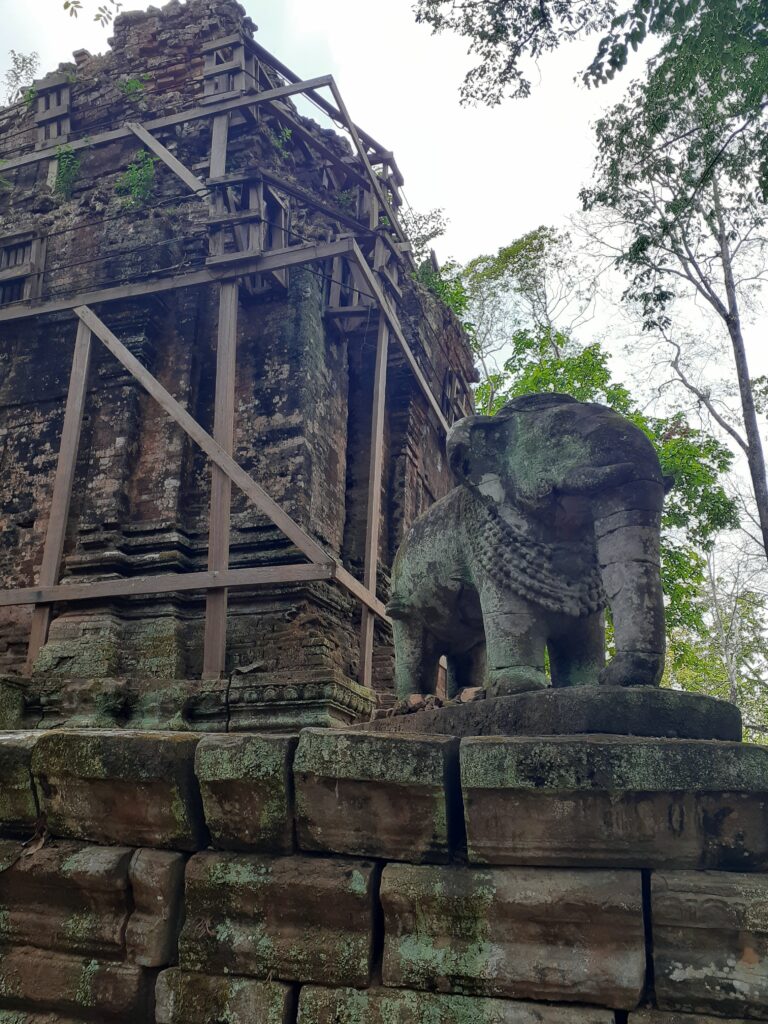
The temple is built of brick and is in relatively good condition. A Sanskrit inscription found in the temple mentions that a linga was once built on top of a pyramid (prang).
Prasat Chrap
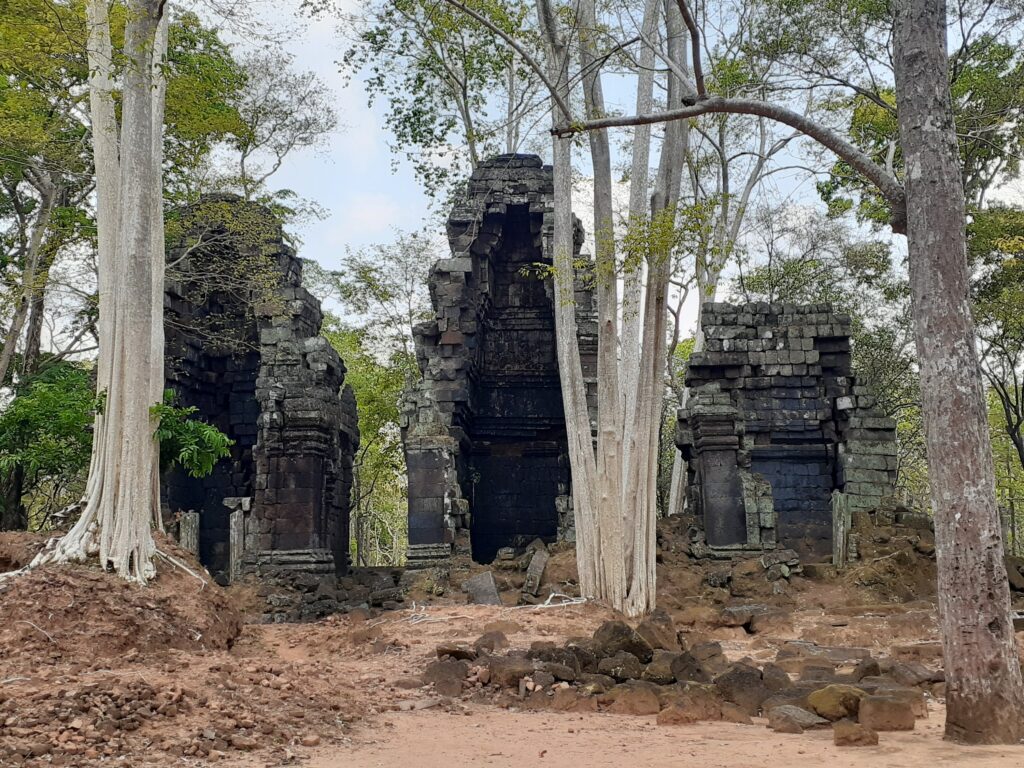
This temple consists of three towers built in laterite. All the towers are now badly damaged, the interior damaged by fire and the western gate destroyed. No inscriptions remain to date the temple, nor can it be determined to which deities it was dedicated.
Prasat Chamreh
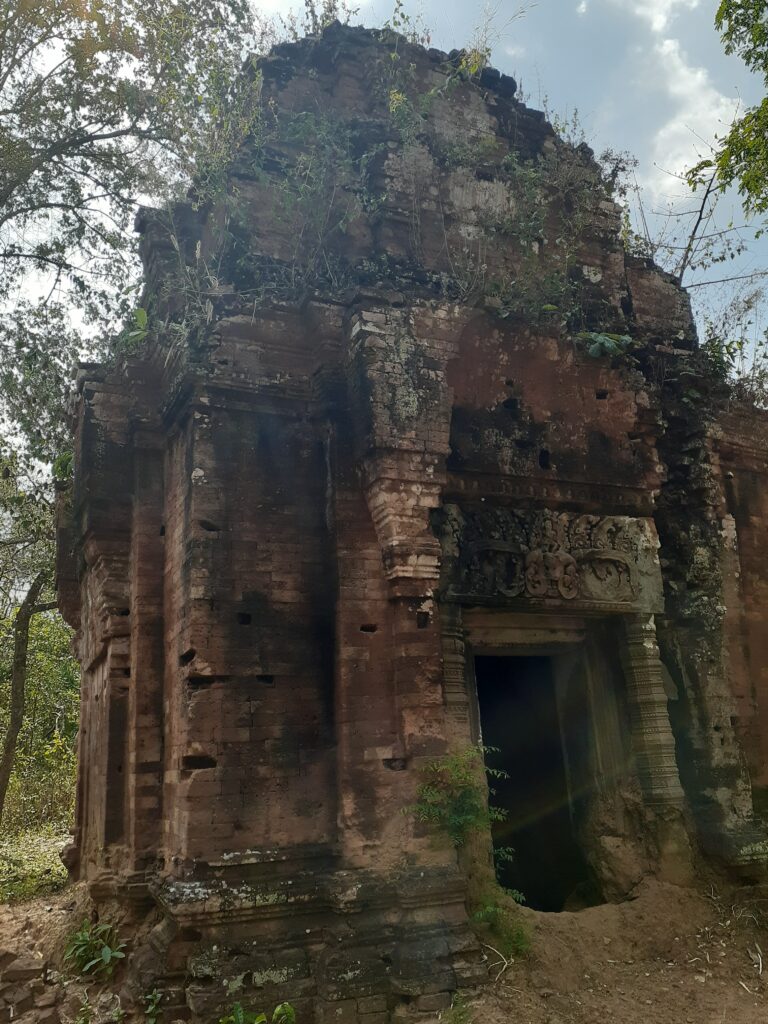
This is a red brick tower. It is relatively well preserved and up to three layers of the roof are clearly visible. It is overgrown with vegetation, creating a beautiful contrast between the red brick and the green vegetation. Reliefs can be seen on the entrance gate.
Prasat Banteay Pir Chaon
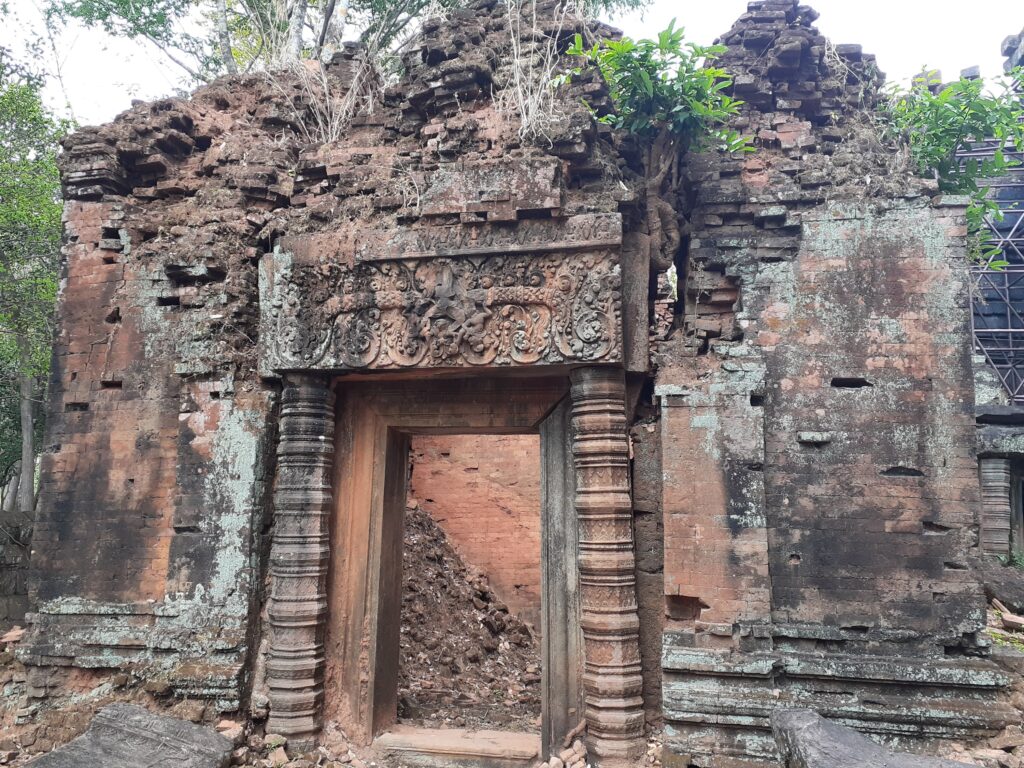
Built in 937 AD by King Jayavarman IV, this is one of the most important temples. In 2012, wooden pillars were added to prevent the main tower from becoming unsafe. Currently, the wooden pillars are deteriorating and a project is underway to replace them with iron pillars.
Prasat Kroes Linga
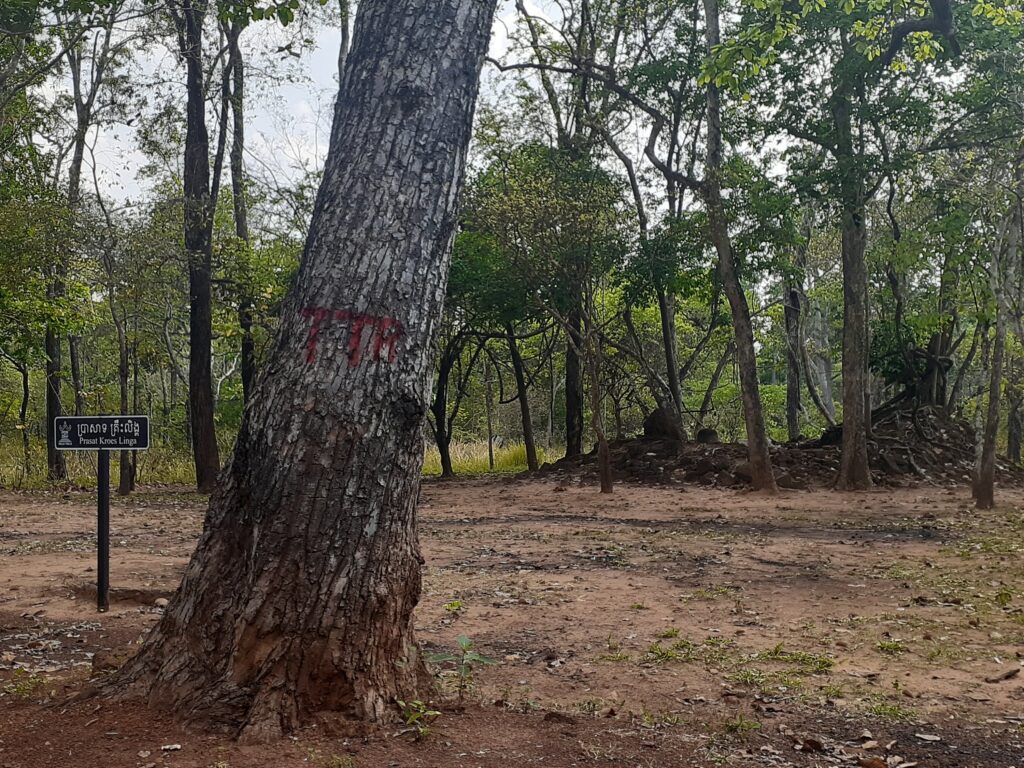
It has almost completely collapsed and no trace of it remains. However, what appears to be a linga can be seen.
Prasat Beng
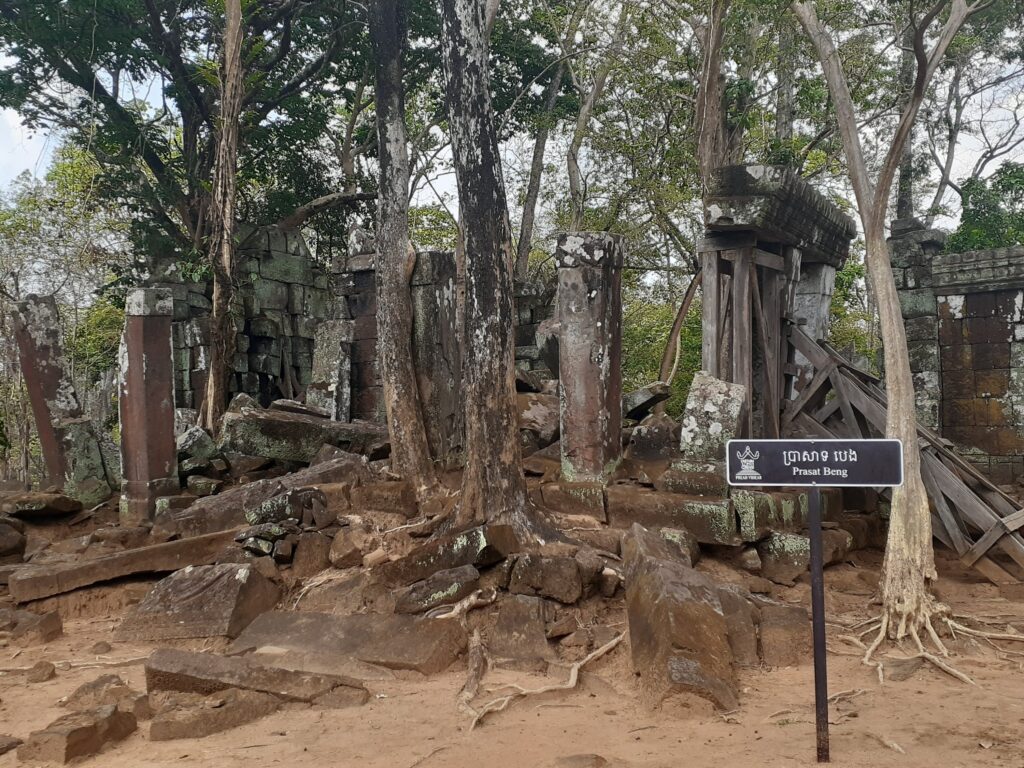
This temple has severely collapsed. The remaining pillars give an idea of the size of the temple. The upper part of the entrance area remains and the carvings can be seen.
Prasat Krachap
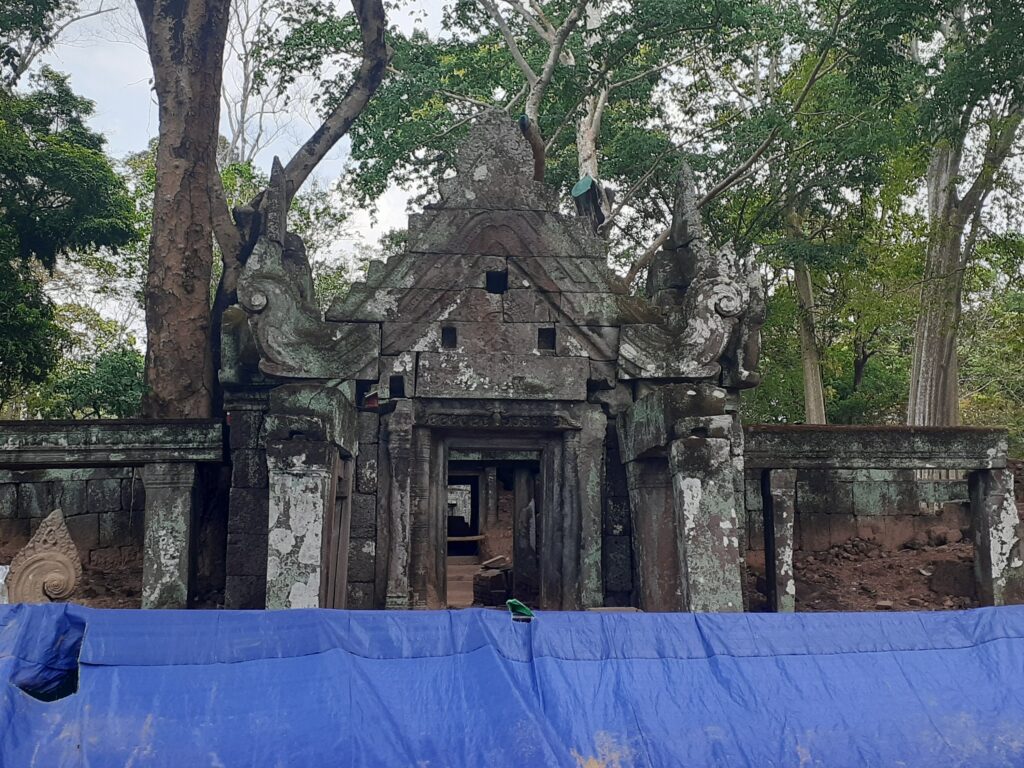
The entrance gate and the ruins of five towers arranged in a pentagonal shape are said to remain, but we were unable to enter due to construction work. It is known that the temple was built in 928 AD as a temple dedicated to Tribhuvanadeva, the Linga of Lord Shiva.
Prasat Sralau
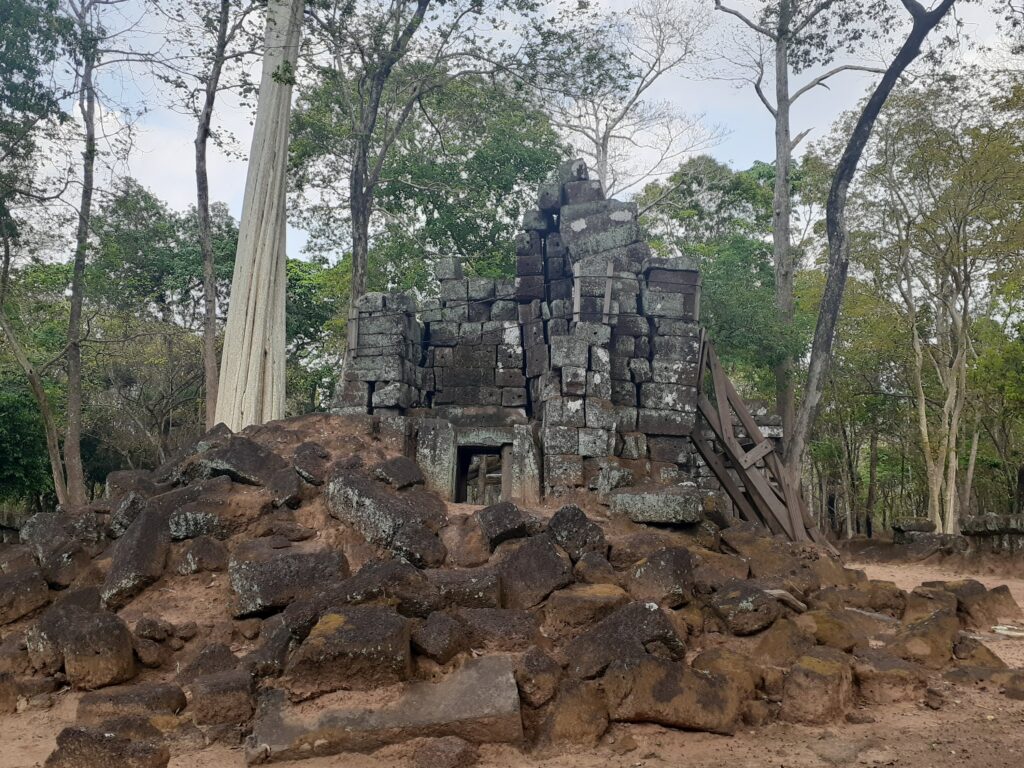
A Buddhist temple built in the late 12th/early 13th century during the reign of King Jayavarman VII, it is one of more than 100 monuments built by him. The name Sralau is derived from a type of tree.
Prasat Linga Four
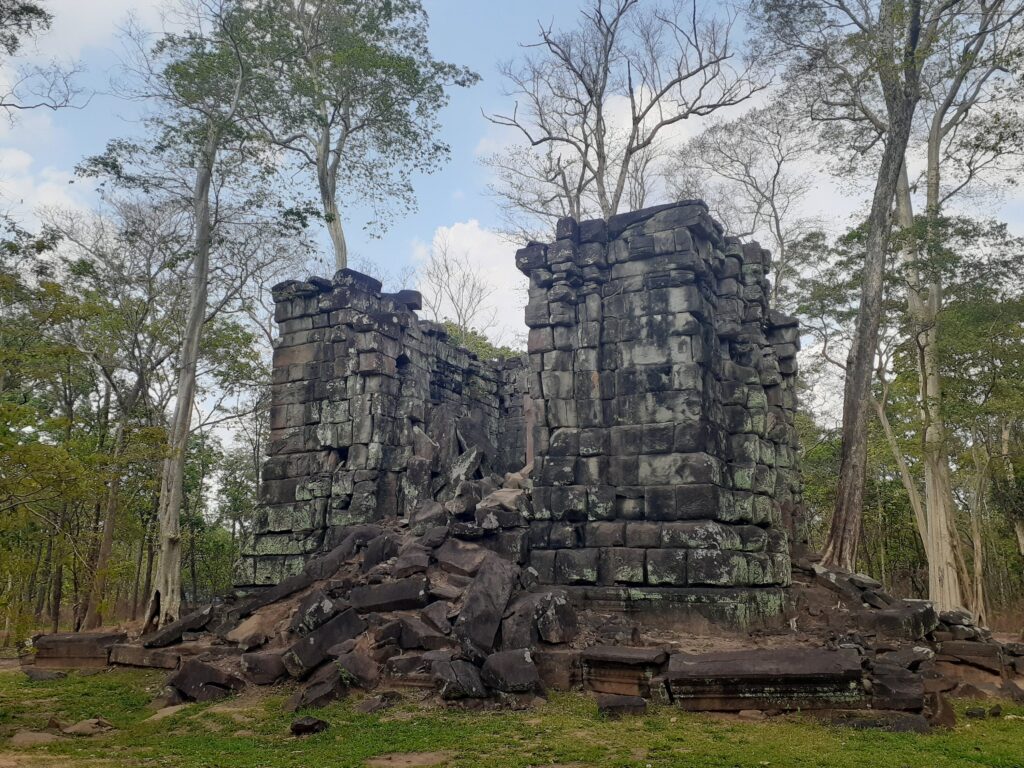
From here, a series of temples dedicated to the Linga appear (Linga Road). They all have similar structures and it is believed that the lingas were placed inside the towers, but some have been damaged.
Prasat Linga Two
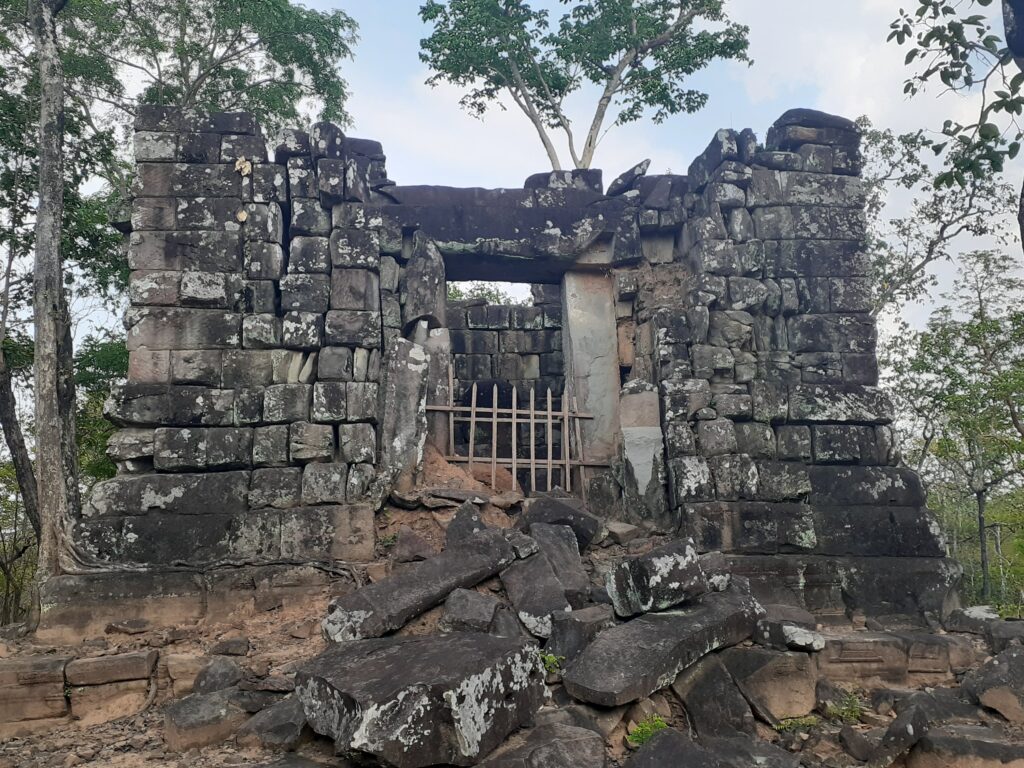
The linga has been partially cut off by looters. About half a length remains, standing in the place of the damaged yoni.
Prasat Linga One
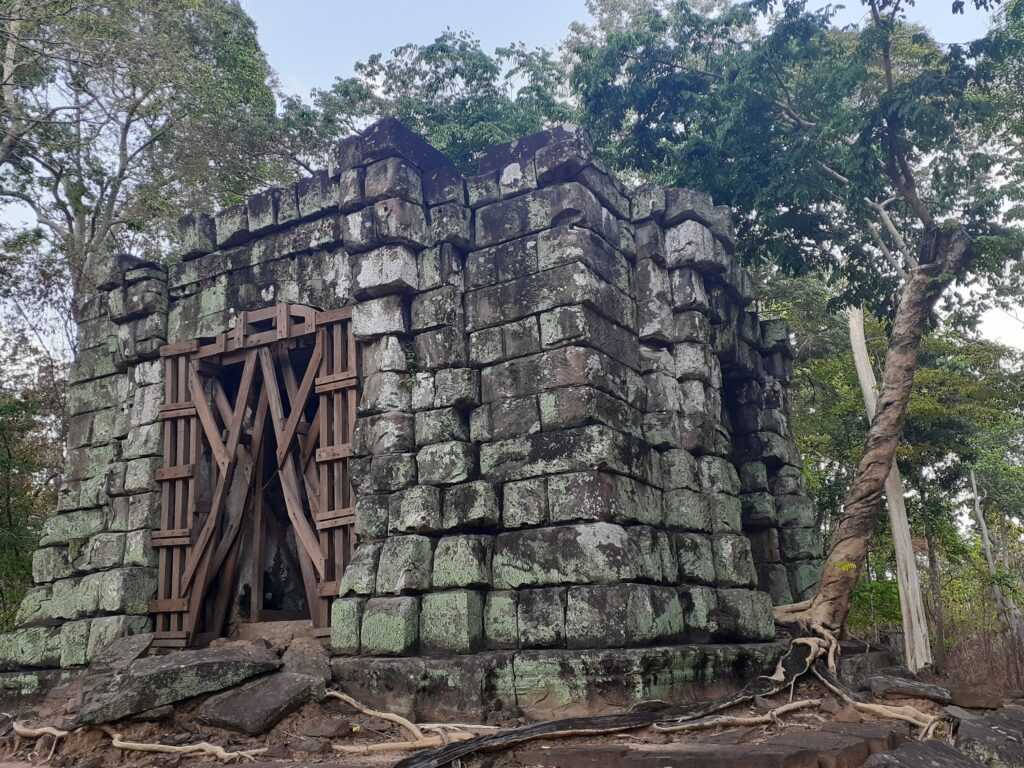
This is the best condition of the Linga shrines standing along the Linga Road. It is a square laterite building, standing on a platform, with one door and an open roof. Inside, there is an impressive linga standing on a yoni. Together with the yoni, it was carved from the bedrock of the site. The yoni is about 1 m high and shaped like an altar. Reliefs were once carved on all four sides.
There is only a small space around the yoni for a few monks to perform rituals. Water poured over the linga is sanctified by touching the symbol of Lord Shiva, flows down and is collected in the yoni’s gutter. It then flows through a spout (which still remains) to the outside of the shrine, where devotees are blessed.
Prasat Srot
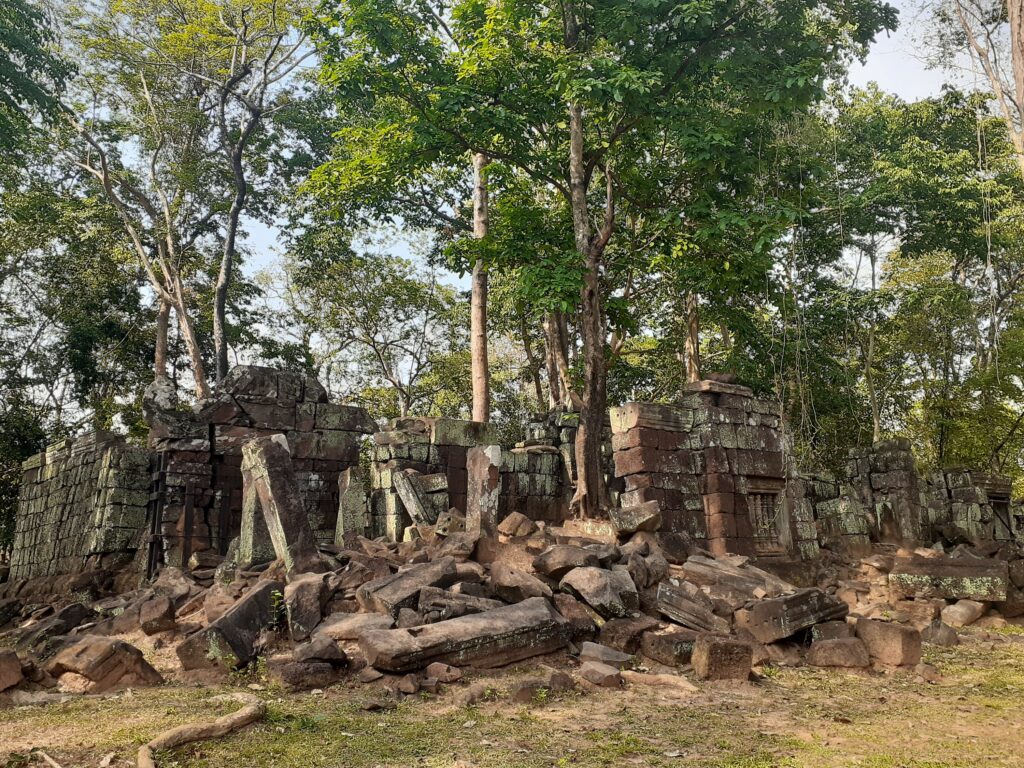
This temple is located to the east of the car park, but is also classified as a ‘Palace’ as it may have been used as a place of meditation and prayer by kings and nobles.
Entrance pavilion of Koh Keh Temple
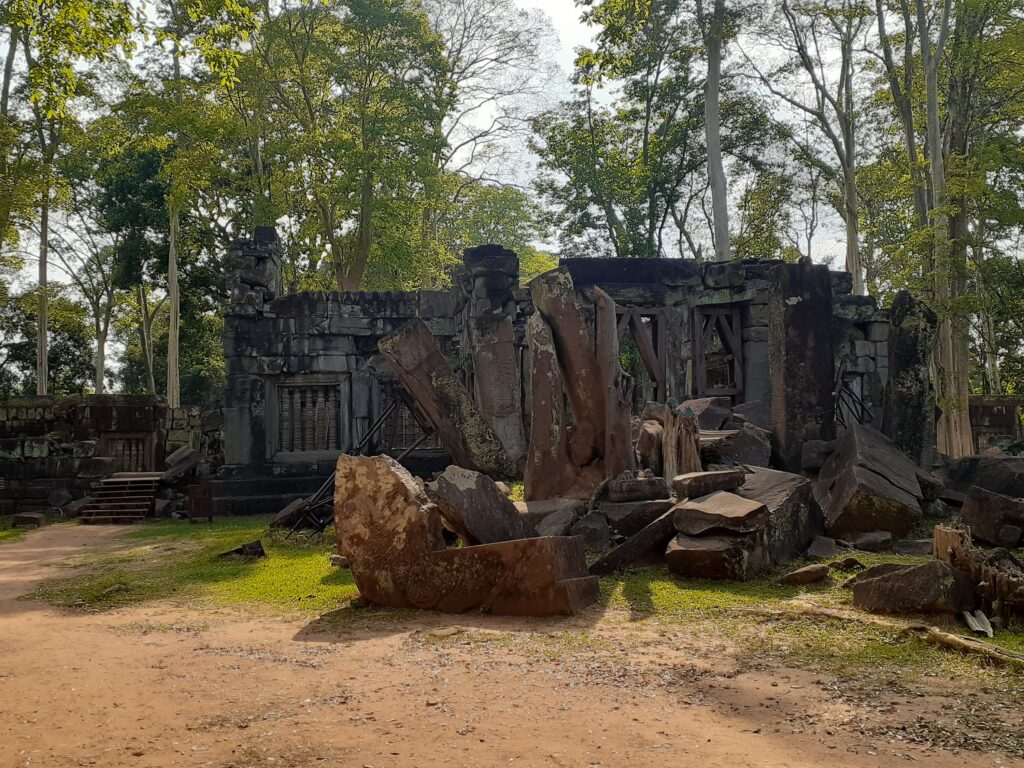
It is made of sandstone and is located 45 m away from the double cathedral. Directly behind the cross-shaped entrance pavilion are the remains of two massive laterite towers.
Prasat Krahom
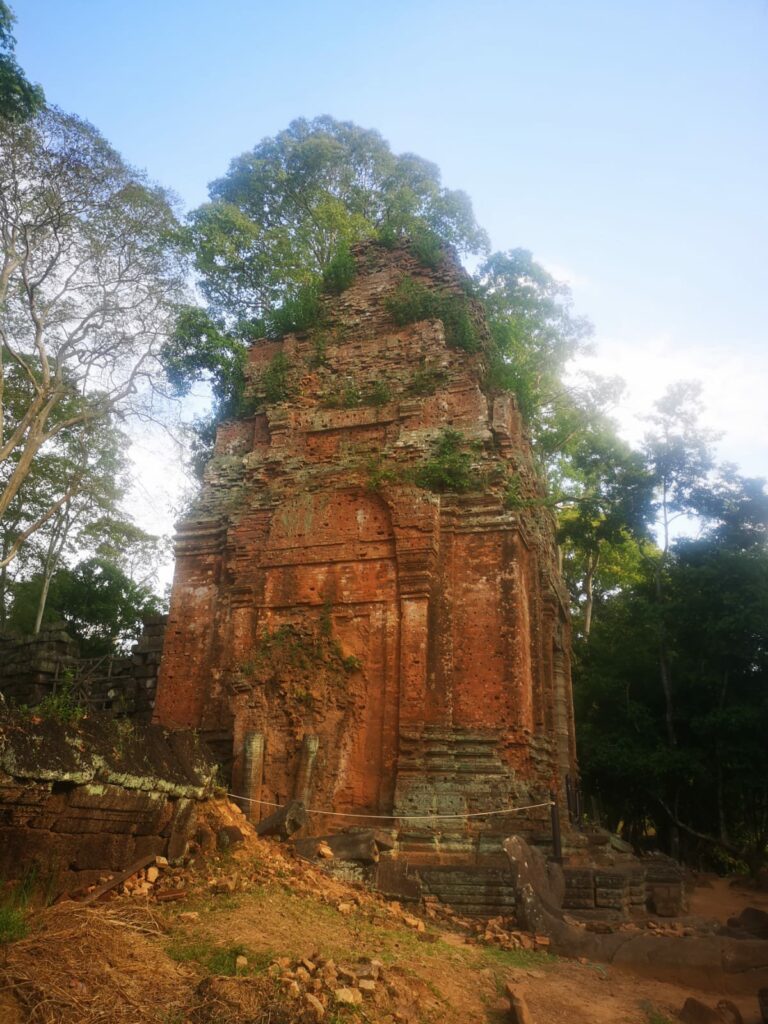
Behind the entrance pavilion and laterite towers is a red brick tower called Prasat Krahom (krahom means red). It once housed a statue of a ‘dancing Shiva’ with five heads and ten arms. The sculpture is said to have been 3.5 m high, but all that remains is a fragment of a hand, which is now housed in the National Museum in Phnom Penh.
Moat
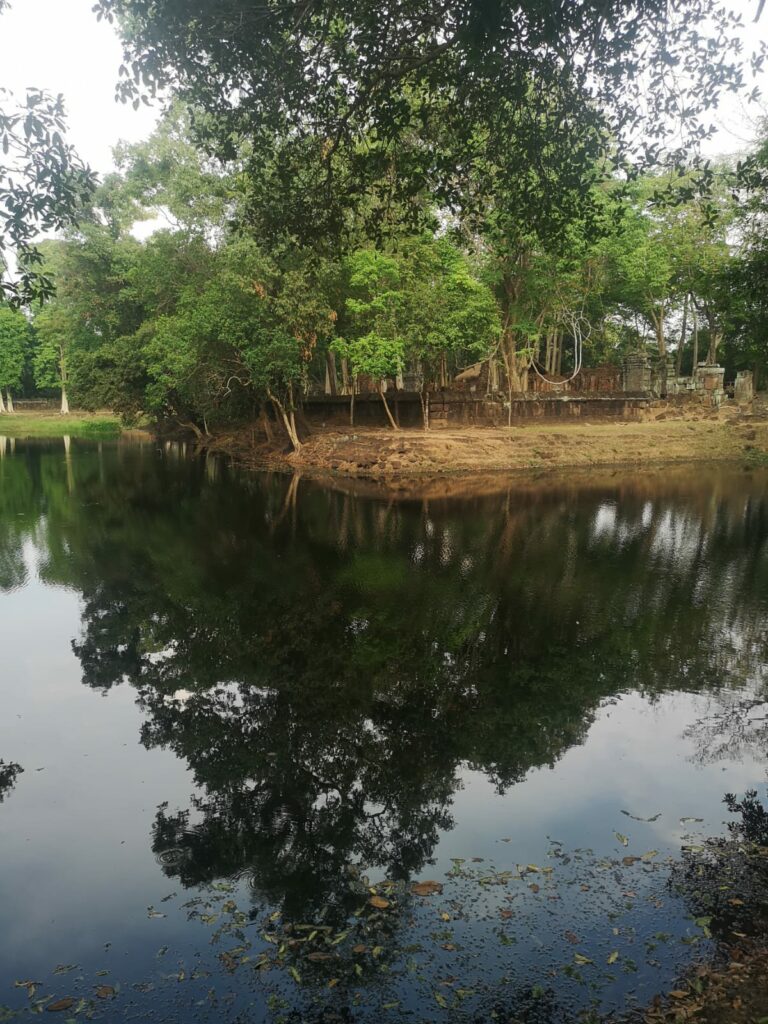
In the eastern courtyard, there is a 47 m wide moat, flanked on both sides by the remaining Nagas, the snake gods. It is known that behind each Naga stood a giant Garuda.
Prasat Thom
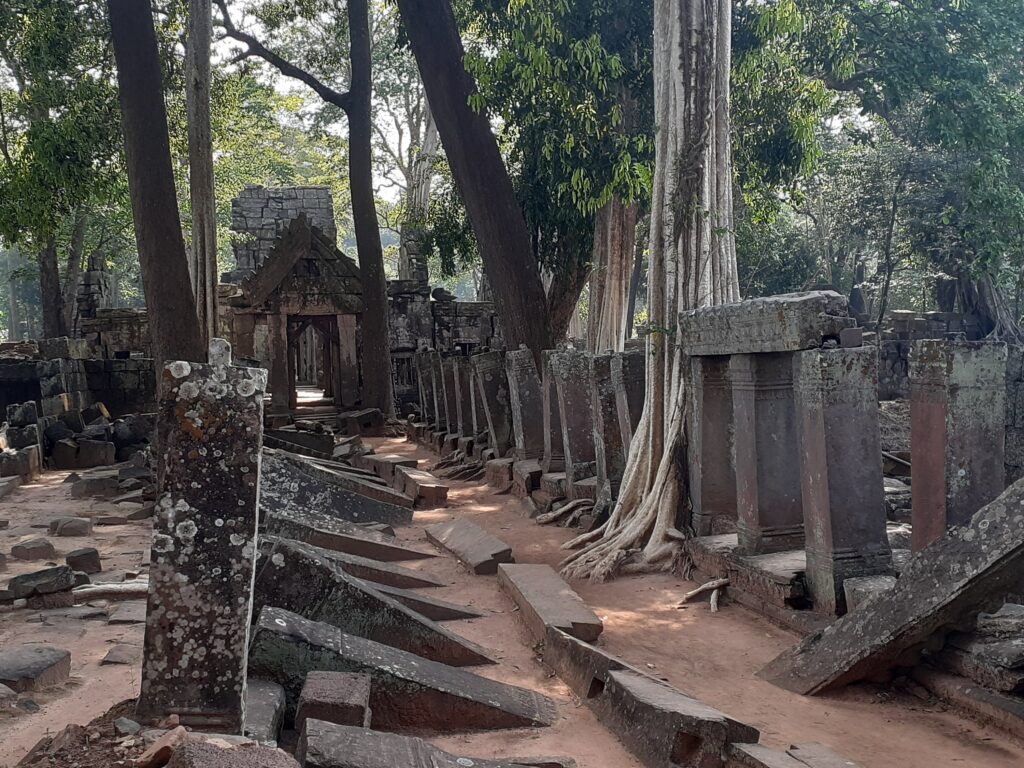
Some parts of Prasat Thom, including the moat and enclosure, are thought to have been constructed before 921 AD.
Prang: 7-storey pyramid
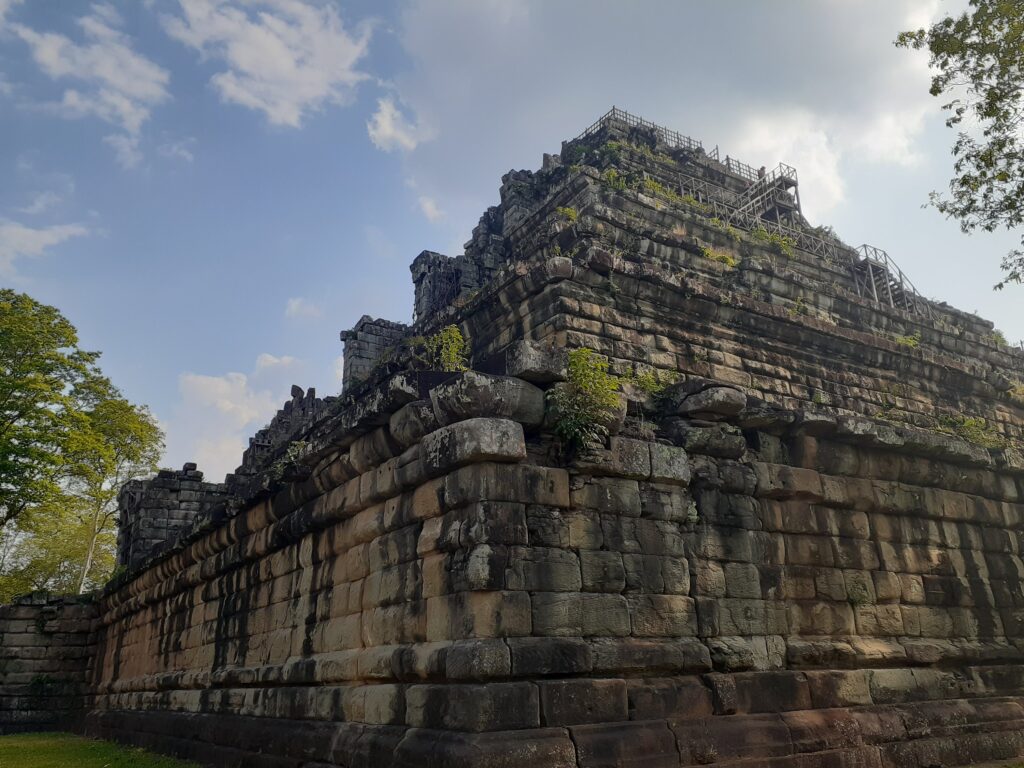
This seven-tier pyramid is one of the impressive sights at the Koh Ker site. The pyramid foundation square building is 62 m on a side and 36 m high. It is thought to have been the state temple of King Jayavarman IV. Construction is believed to have started in 928 AD.
The top floor of the pyramid once housed a huge linga, more than 4 m high and weighing several tonnes. An inscription states that it was the tallest and most beautiful Shiva lingam.
A staircase leading to the top has been constructed on the eastern side of the pyramid, but it is in very poor condition and it is not possible to climb to the top from here. There is a new staircase to the top on the north side of the pyramid, with a beautiful relief of Garuda on the side of the seventh level.
Tomb of the White Elephant
At the back of the pyramid is a man-made hill covered with trees and called the Tomb of the White Elephant. The White Elephant is a legendary symbol in South East Asia. However, the slope leading to the top of the hill is currently closed and cannot be climbed.
Prasat Chen
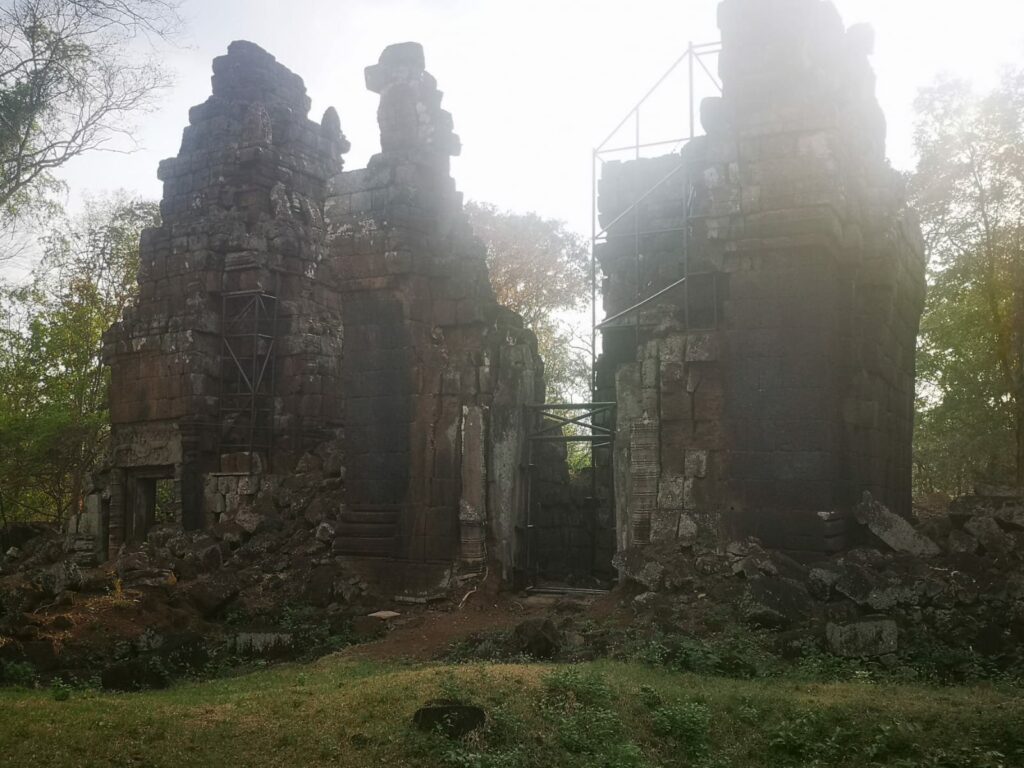
After visiting the main area with the pyramids, return to the city, visiting the temples dotted around the cisterns.
Prasat Chen has three laterite towers standing on the same platform, in front of which are the remains of a brick library.
Prasat Bak
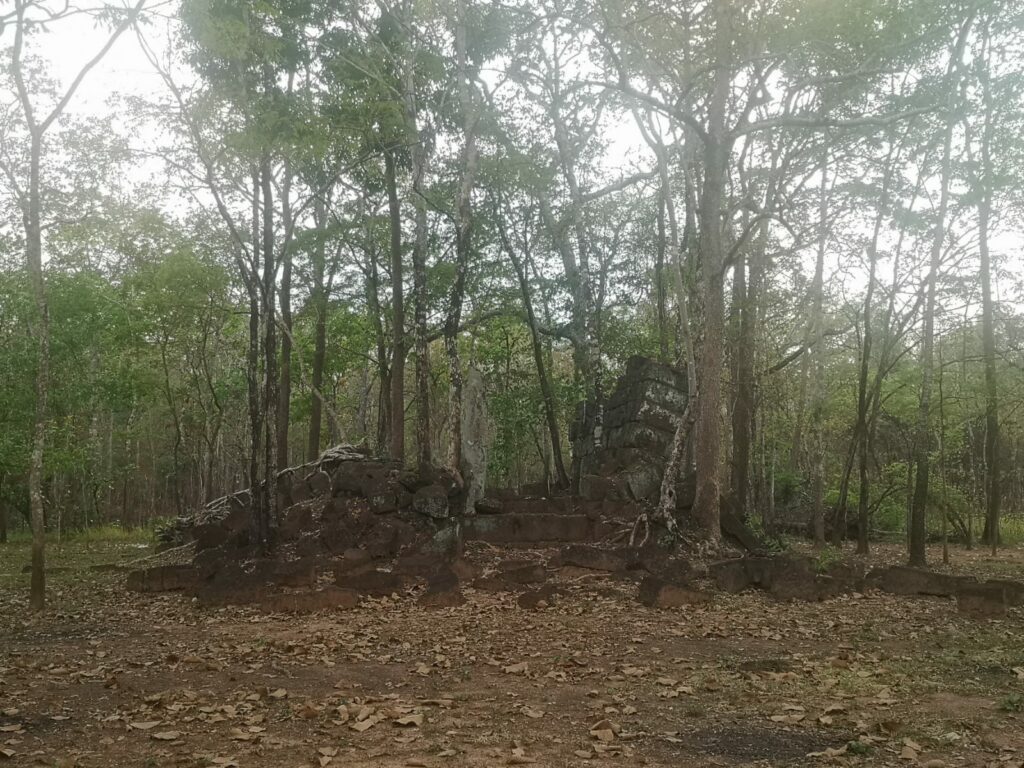
A small square temple built of laterite, measuring only 5 m on each side. The temple, now in very poor condition, housed a colossal statue of Ganesha (Ganesha is a Hindu deity, son of Shiva and Uma) until 1960. Today, Ganesha sculptures are known to be housed outside Cambodia.
Prasat Neang Khmau
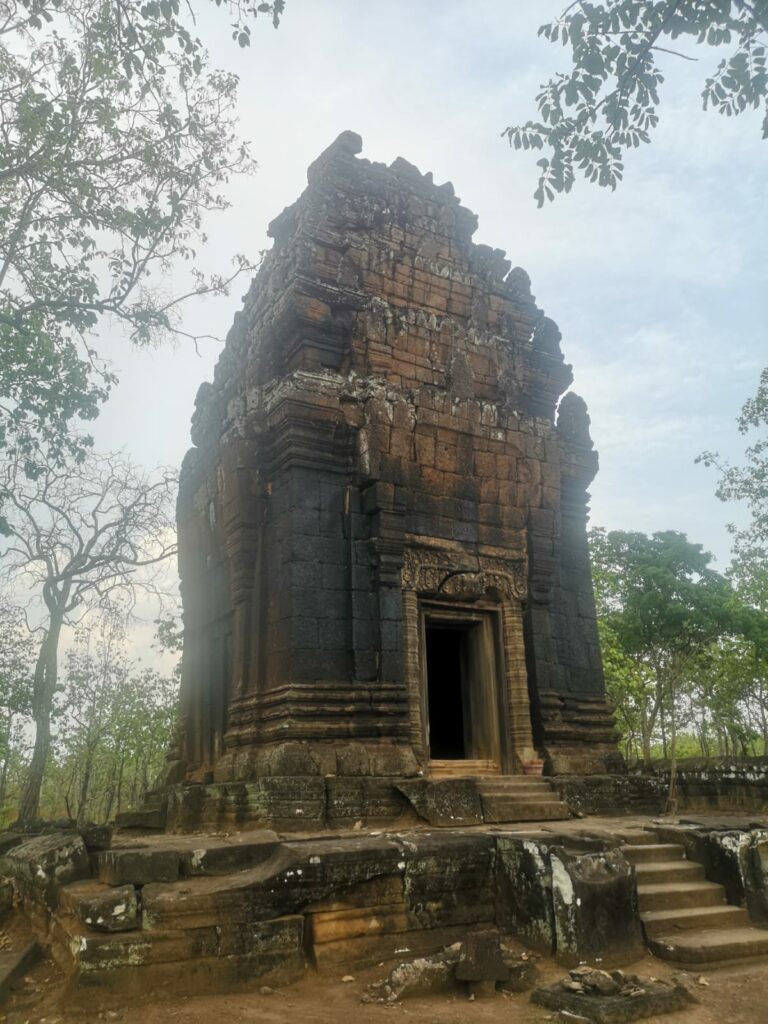
Built in the early 10th century as a temple to the Hindu god Shiva. Neang Khmau means ‘black woman’ in Khmer, but the name is thought to have been given to the temple because its outer walls were damaged by fire to a black colour.
Prasat Pram
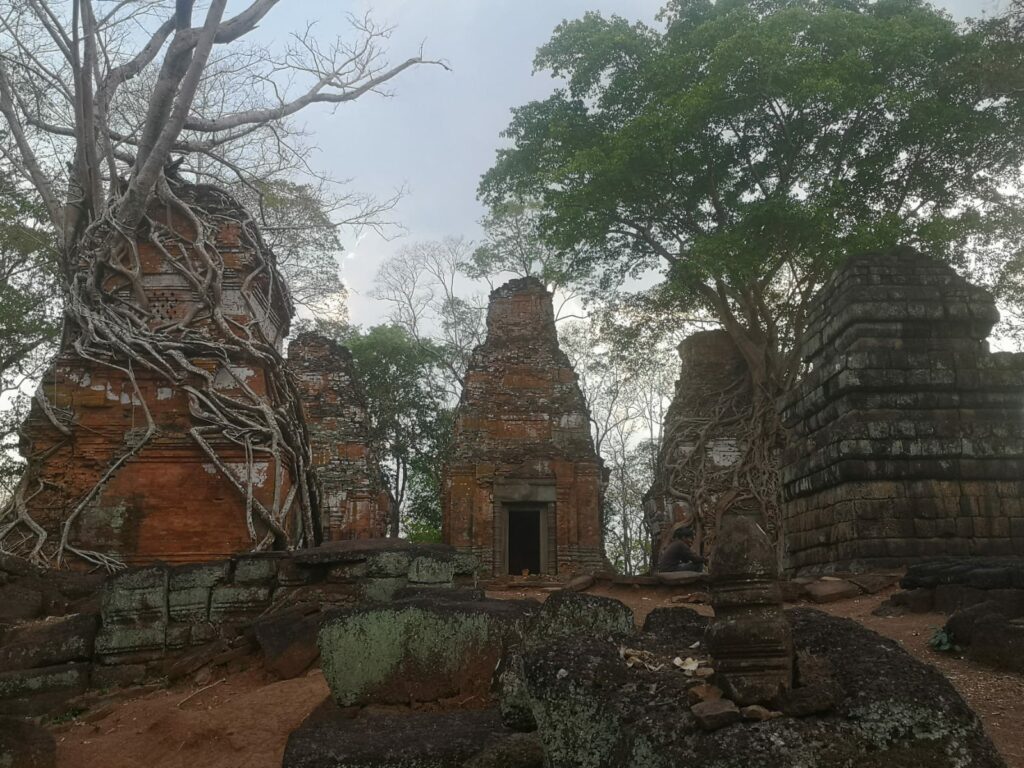
This is the most southerly spot in the archaeological park, about 300 m along a path from the main road. ‘Pram’ means ‘five’ in Khmer and there are five towers. Apart from one made of laterite, the other four towers are made of brick, and two of the brick towers are covered with plant roots.
One of the brick towers has a diamond-shaped hole in the top, indicating that this tower once served as a fire sanctuary. During the Khmer period, the belief in fire was very important.
The former pagoda was covered with white stucco, traces of which can still be seen today. Two artefacts from Prasat Phu Lam, a damaged lion statue and a fragment of a standing statue of Vishnu with four arms, are housed in the Phnom Penh National Museum.
Access to the Koh Ker Archaeological Site
The Koh Ker ruins are over 200 km from Stung Treng and about 120 km from Siem Reap. Many tourists seem to visit the site as a day tour from Siem Reap.
If visiting on your own, the nearest town to the Koh Ker site is Phumi Moreal, which we travelled to by minibus from Stung Treng, stayed overnight in Phumi Moreal and visited the site on a motorcycle rented from the guesthouse. The following day we then travelled by minibus to Siem Reap.
There may be minibuses (shared taxis) from Siem Reap, but if you use these, you will have to get out at the intersection of the Stung Treng-Siem Reap road and the road to the Koh Ker ruins. From the intersection to the Koh Ker ruins is about 10 km away, so you will need to find transport from there.
As I mentioned earlier, we stayed overnight in the town of Phumi Moreal, where we ‘hired’ a motorcycle. The motorcycle was a manual and the asking price was USD 8 per day, but we negotiated by telling them we would only be using it for half a day, and in the end it was included in the accommodation price, so it was practically free. Incidentally, the accommodation rate was USD 15 per night for a double room with air conditioning.
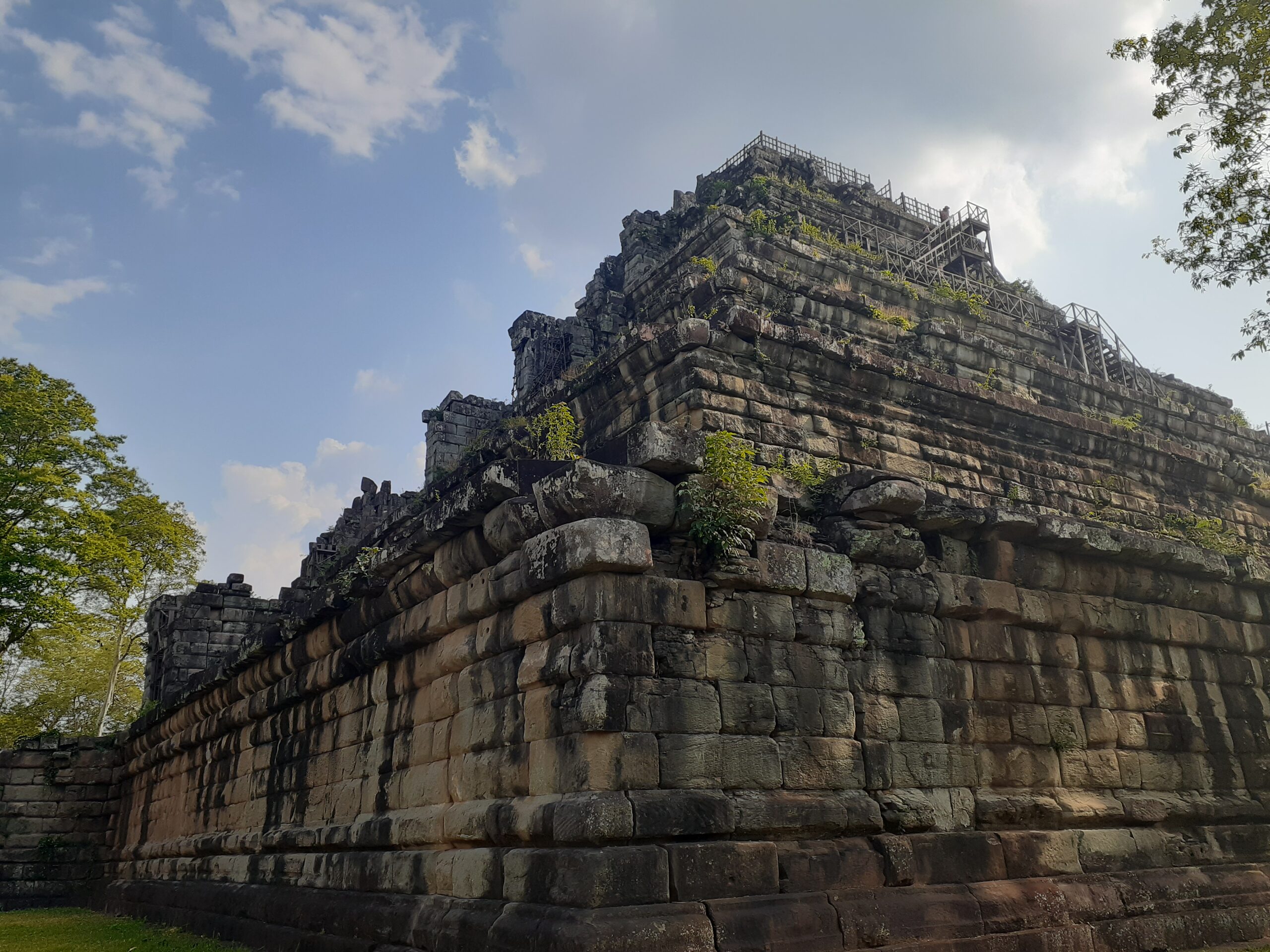



Comment